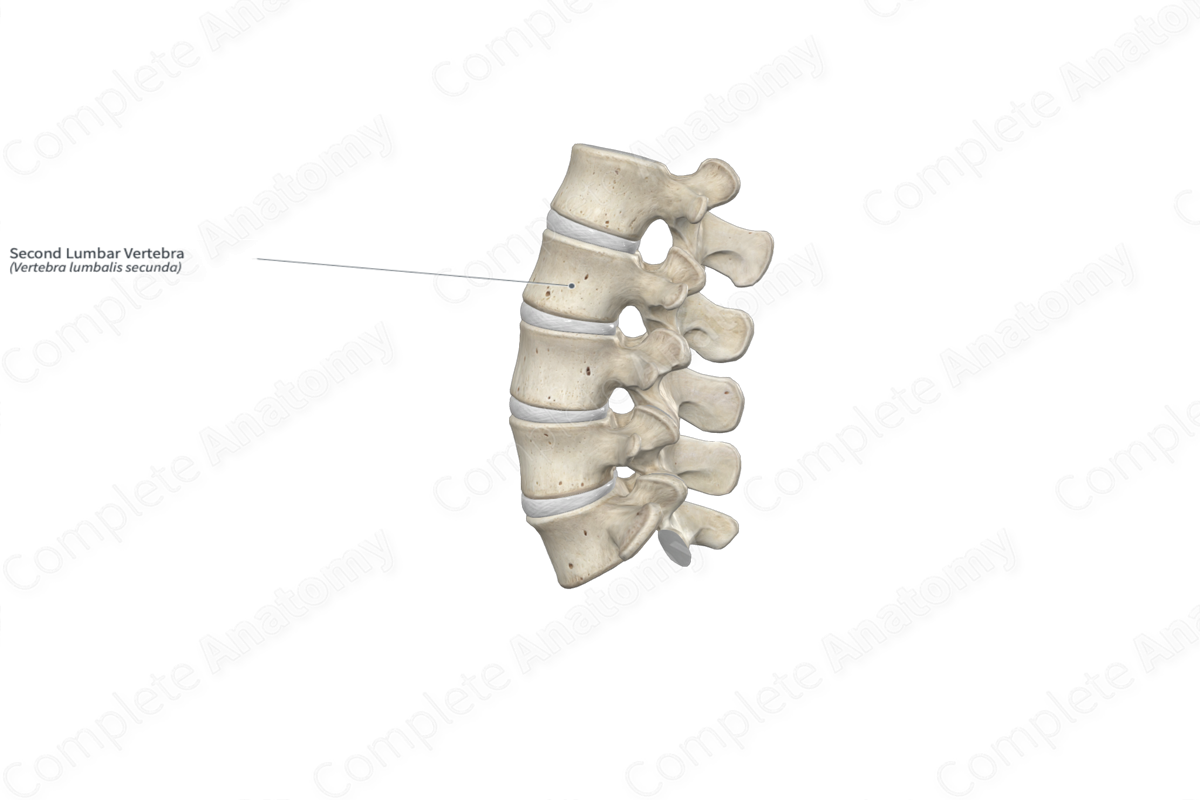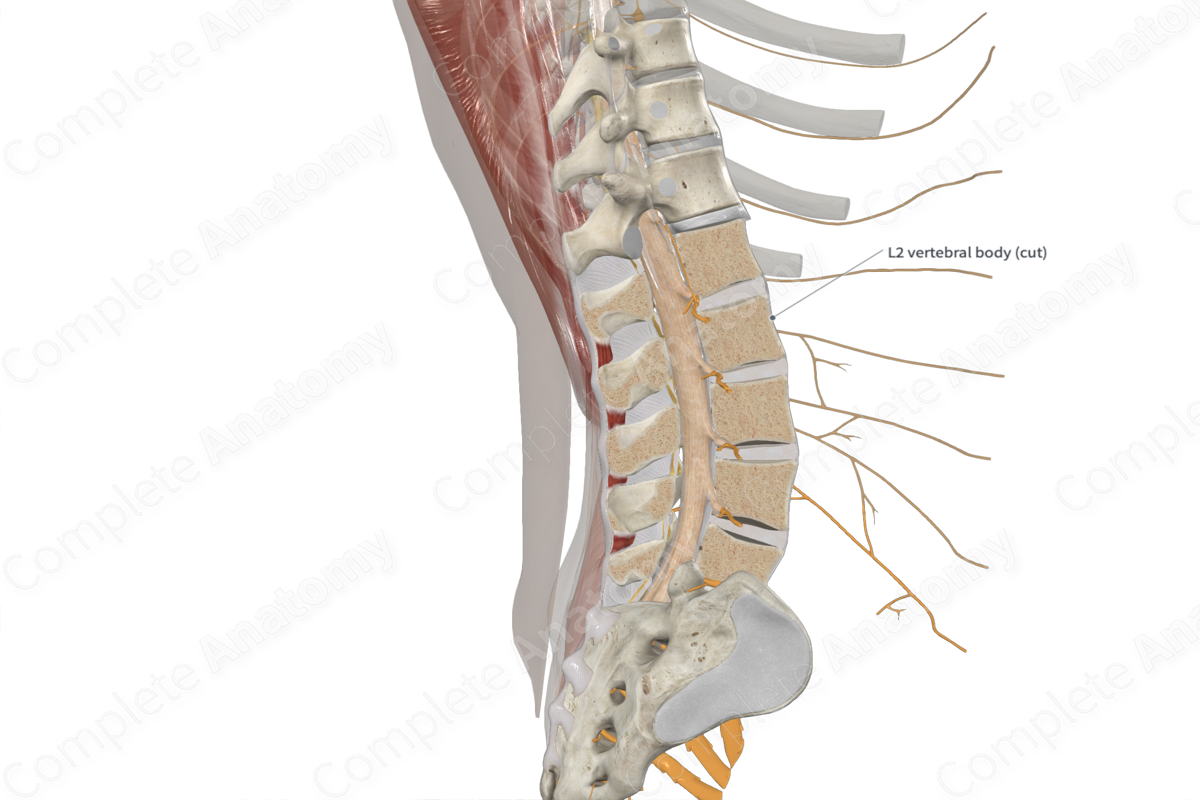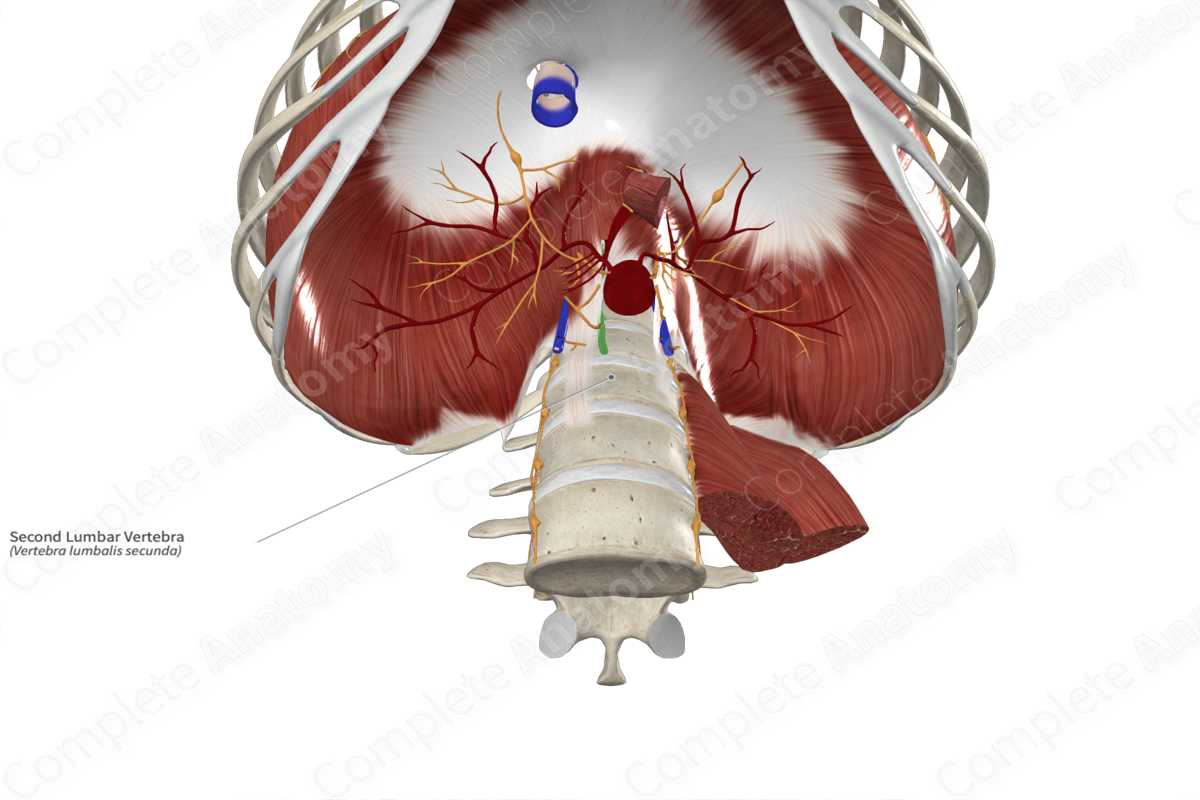
Quick Facts
Location: Vertebral column.
Bone Type: Irregular bone.
Key Features: Vertebral body, laminae, pedicles, superior and inferior articular processes, and transverse and spinous processes.
Articulates With: First and third lumbar vertebrae.
Arterial Supply: Lumbar arteries.
Key Features & Anatomical Relations
The second lumbar vertebra (vertebra L2) is the one of the five lumbar vertebrae of the vertebral column. It is classified as an irregular bone, and it includes the following bony features:
- parts: vertebral body, laminae, pedicles, superior and inferior articular processes, and transverse and spinous processes;
- surfaces: superior and inferior intervertebral surfaces, superior and inferior annular epiphyses, and vertebral arch;
- landmarks: superior and inferior vertebral notches, mammillary and accessory processes, and superior and inferior articular facets.
More information regarding these and other bony features can be found in the Parts, Surfaces, and Landmarks tabs for this bone.
The second lumbar vertebra is located:
- superior to the third lumbar vertebra;
- inferior to the first lumbar vertebra.
It articulates with the first and third lumbar vertebrae at the intervertebral symphyses and zygapophyseal joints.
Ossification
Ossification of all lumbar vertebrae occurs at ten ossification centers, these are found in the:
- vertebral body, which appears in utero during the second to fourth months;
- right and left halves of the vertebral arch, with one center found in each, which appear in utero during the third month;
- right and left transverse processes, with one center found in each, which appear during puberty;
- spinous process, which appears during puberty;
- superior and inferior annular epiphyses, with one center found in each, which appear during puberty;
- right and left mammillary processes, with one center found in each, which appear during early adolescence.
The ossification centers for the right and left halves of the vertebral arch fuse with each other during the first year after birth. The vertebral arch fuses with the vertebral body during the third year. The remaining centers fuse with the vertebral arch and body during early adulthood (Standring, 2016).
Variations
In some individuals the superior or inferior articular processes of lumbar vertebrae may occasionally present an accessory ossicle, known as an Oppenheimer ossicle (Tubbs, Shoja and Loukas, 2016).
Surface Anatomy
The spinous process of the second lumbar vertebra can be palpated, especially during flexion of the trunk.
List of Clinical Correlates
- Fracture
- Osteoporosis
- Spinal stenosis
- Scoliosis
- Spondylosis
- Spondylolisthesis
- Spondylolysis
References
Standring, S. (2016) Gray's Anatomy: The Anatomical Basis of Clinical Practice. Gray's Anatomy Series 41st edn.: Elsevier Limited.
Tubbs, R. S., Shoja, M. M. and Loukas, M. (2016) Bergman's Comprehensive Encyclopedia of Human Anatomic Variation. Wiley.
Learn more about this topic from other Elsevier products
Second Lumbar Vertebra

It arises from the confluence of lumber lymph trunks or the cysterna chyli at the level of the second lumbar vertebra and extends to the lower neck.


